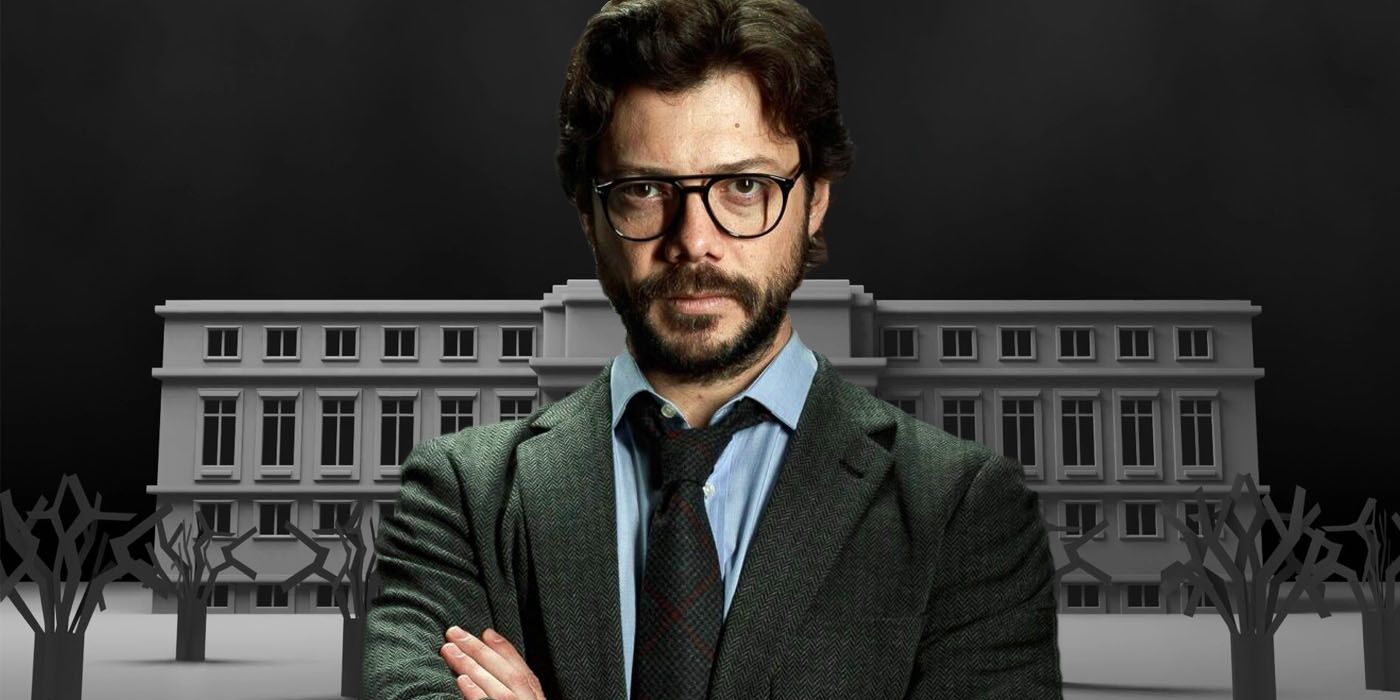Money Heist's criminal mastermind, the Professor, spent years perfecting his plan to rob the Royal Mint of Spain - but it was never really about the money. Like many great thieves, the Professor was partly motivated simply by the art of the heist. He planned the job down to the smallest detail and packed it with contingencies and back-up solutions with the assumption that, at some point, something would go wrong.
In Money Heist season 1, the Professor assembled a crew of robbers who were mostly strangers to one another (with the exception of cousins Oslo and Helsinki, and father-and-son team Moscow and Denver). Unlike most heists, where the goal is to get in and out as quickly as possible, the Royal Mint heist involved stalling for as much time as possible in order to use the machines inside the building to print untraceable bills. The crew were ultimately inside the building for 11 days, and managed to print almost a billion Euros in cash.
The Professor was clearly neither poor nor desperate, since organizing the heist required a considerable investment up front for all of the equipment and planning. For him, it was about a lot more than just getting rich. Here are the real reasons behind the Professor's obession with the Royal Mint heist.
The Professor Wanted To Honor His Father
The Professor didn't actually come up with the plot to rob the Royal Mint. It was originally devised by his father, Jesús Marquina, who died before he could see his plan come to fruition. As a child the Professor was very sick and confined to a hospital bed, and his father wanted to pay for him to be treated in America. He robbed a bank in an effort to raise the funds, but was killed in a shootout. When Berlin (who, it is eventually revealed, is actually the Professor's brother) comes across the Professor burning photos of himself and his father in the Money Heist season 2 premiere, he remarks, "We're doing it for him." On a simple level, the Professor wants to make his father's dream come true - but the motivations for the Royal Mint heist also run deeper than that.
The Professor Wanted To Redistribute Wealth
Money Heist premiered a decade after a financial crisis that ravaged the finances and futures of people around the world. At its heart, the show captures the anger and resentment felt in response to the bailing out of banks that were partly responsible for the crash. Fundamentally it's a Robin Hood tale of taking from the rich and giving to the poor - but the Professor argues that what they're doing is not stealing at all. He tells the police:
"In 2011, the European Central Bank made €171bn out of nowhere. Just like we’re doing. Only bigger. Do you know where all that money went? To the banks. Directly from the factory to the pockets of the rich. Did anyone call the European Central Bank a thief? No. ‘Liquidity injections,’ they called it. I’m making a liquidity injection, but not for the banks. I’m making it here, in the real economy."
Obviously the money was only distributed into the hands of a small handful of robbers, but as far as the Professor was concerned it was still a redistribution of wealth. Unlike the banks' liquidity injection, the money printed during the Royal Mint heist was actually spent "in the real economy," with the crew travelling around the world spending their money after they escaped. This was taken a step further in the first stage of the Bank of Spain heist, when the Professor used airships to scatter cash over Madrid - literally putting it back into the hands of the people.



